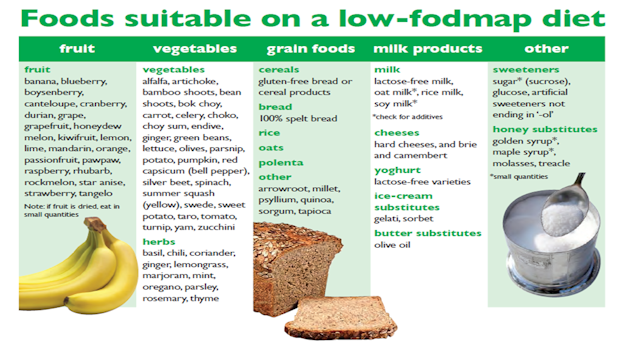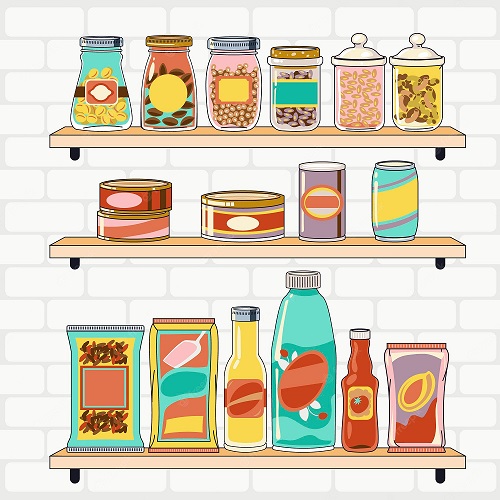FODMAP is the new kid on the block getting attention and helping people with food intolerances by eliminating food groups that are poorly absorbed by the small intestine and limiting food groups that are only partially absorbed by the small intestine.
FODMAPs stands for Fermentable Oligosaccharides, Disaccharides, Monosaccharides and Polyols.
These are complex hard to say names stand for a group of molecules found in food, that can be poorly absorbed by some people.
FODMAP’s is best described as
“When the molecules are poorly absorbed in the small intestine of the digestive tract, these molecules then continue along their journey along the digestive tract, arriving at the large intestine, where they act as a food source to the bacteria that live there normally. The bacteria then digest/ferment these FODMAPs and can cause symptoms of Irritable Bowel Syndrome (IBS). Symptoms of Irritable Bowel Syndrome include abdominal bloating and distension, excess wind (flatulence), abdominal pain, nausea, changes in bowel habits (diarrhoea, constipation, or a combination of both), and other gastrointestinal symptoms.”
Does this ring a bell for you? Don’t worry you’re not alone.. So what’s a fodmap food?
Let’s begin by taking a look at the foods that are said to cause abdominal fermentation.
 As you can see the usual suspects are there, dairy, wheat products, legumes, cauliflower, onion, and cheeses. I have gone through this list and ticked nearly each one of these food products that have given me distress over the past and which I have either eliminated or reduced (sometimes it’s hard). As much as I love lentils, and kidney beans (I would suck at being a vegetarian) eating them is just not worth the pain and even though cauliflower pizza (with onion, broccoli, corn and cheese) is my latest fave, again the days following are not ..
As you can see the usual suspects are there, dairy, wheat products, legumes, cauliflower, onion, and cheeses. I have gone through this list and ticked nearly each one of these food products that have given me distress over the past and which I have either eliminated or reduced (sometimes it’s hard). As much as I love lentils, and kidney beans (I would suck at being a vegetarian) eating them is just not worth the pain and even though cauliflower pizza (with onion, broccoli, corn and cheese) is my latest fave, again the days following are not ..
It makes sense to see them all in the one chart with an explanation.
But it’s not all bad as here is another chart to help you choose foods that get the green light.  I think the best indicator is to eat each food separately to be able to distinguish if it does, in fact, leave you uncomfortable. Each individual person is unique in how they react to foods but this gives a broad outline of potential tummy problem culprits. It’s not always a case of one diet fits all. Oh and there’s even an app for it
I think the best indicator is to eat each food separately to be able to distinguish if it does, in fact, leave you uncomfortable. Each individual person is unique in how they react to foods but this gives a broad outline of potential tummy problem culprits. It’s not always a case of one diet fits all. Oh and there’s even an app for it
How does this sit with you? Can you tick off a bunch of foods that cause you trouble troubles too?



